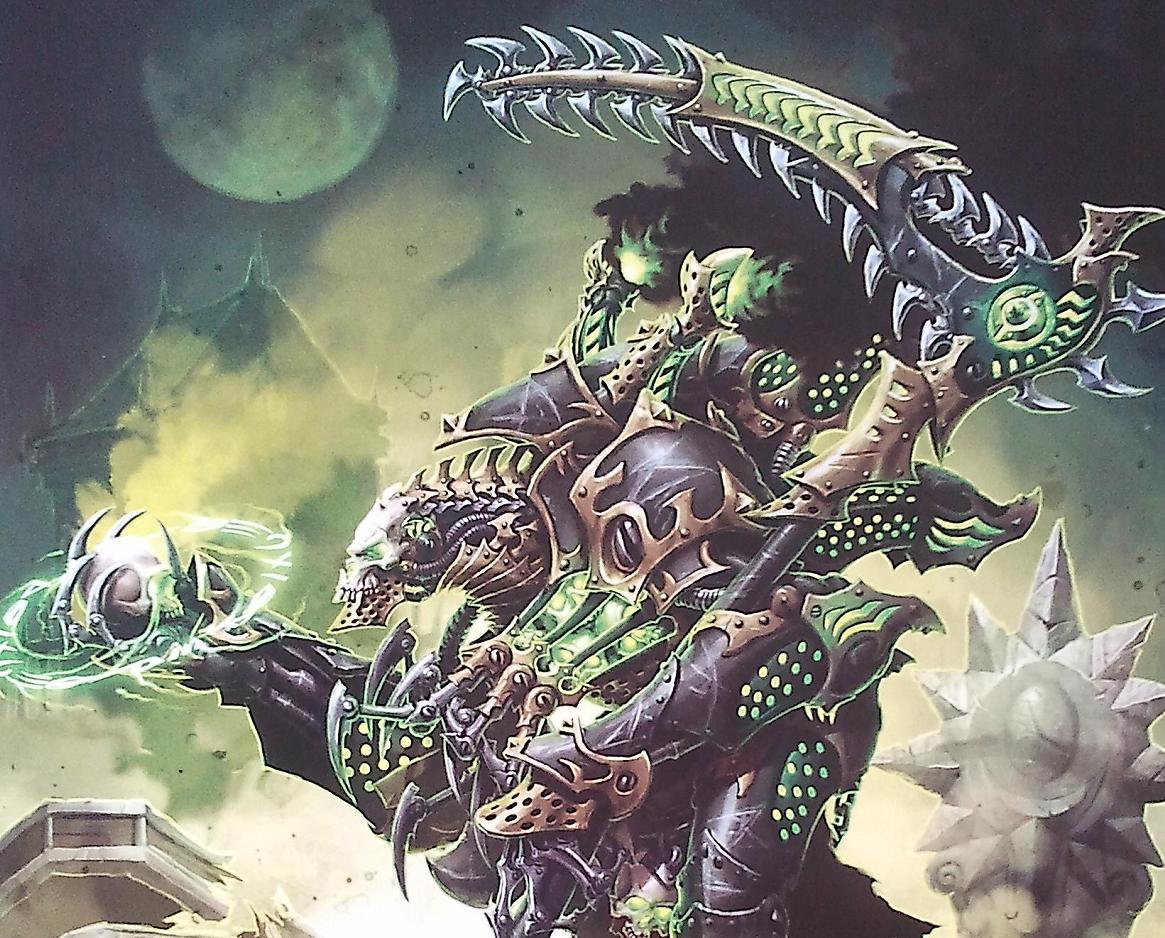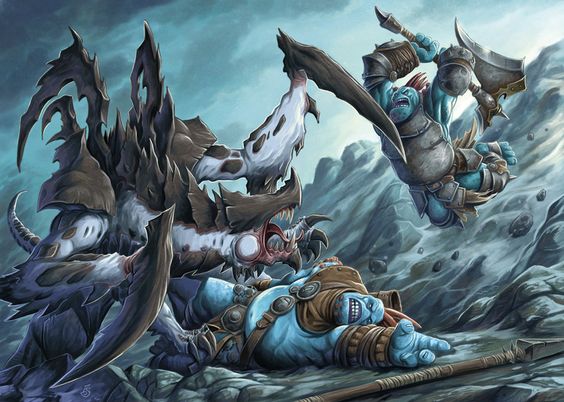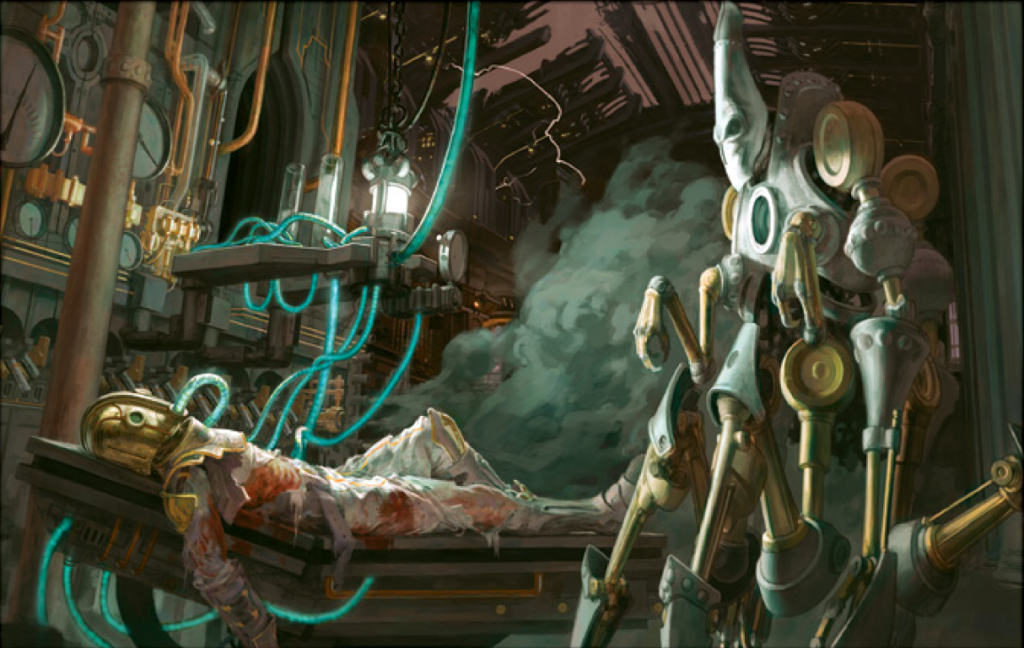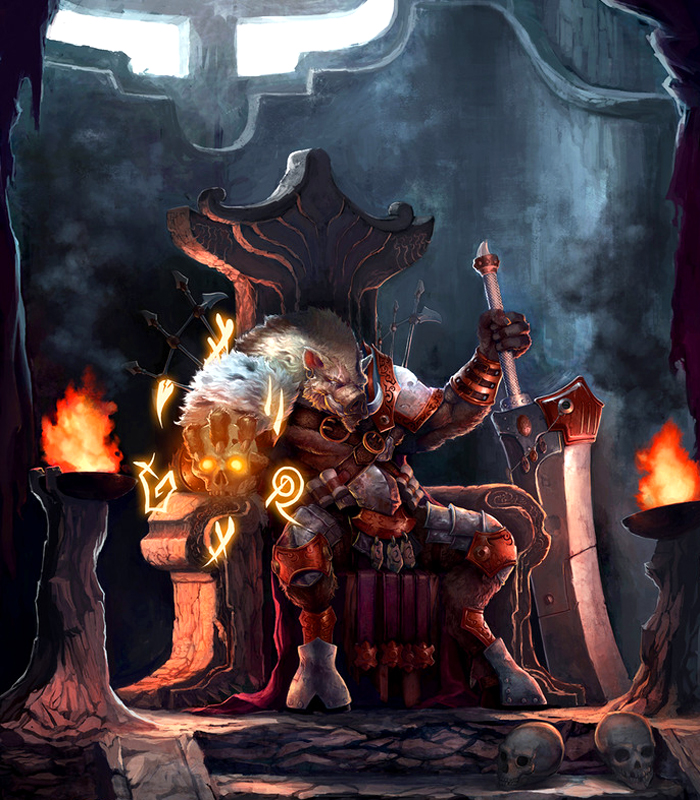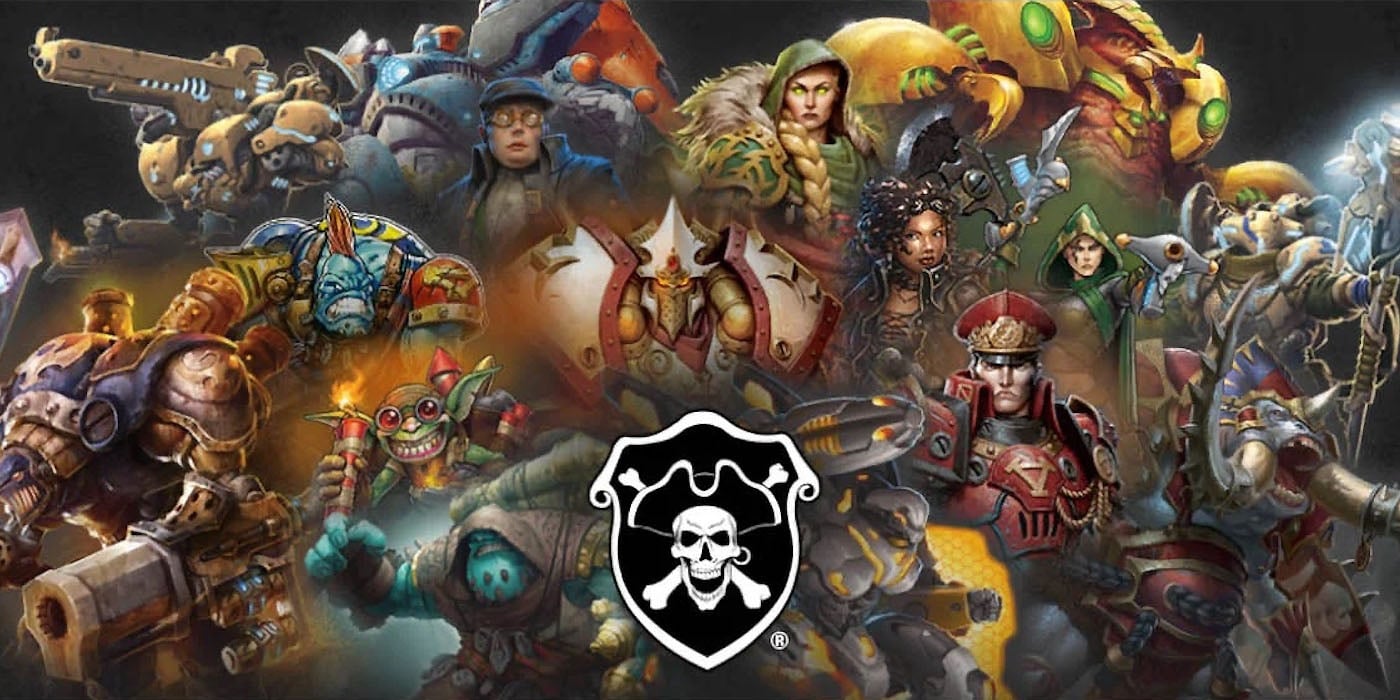Warmachine: Best of the Best – Fluff
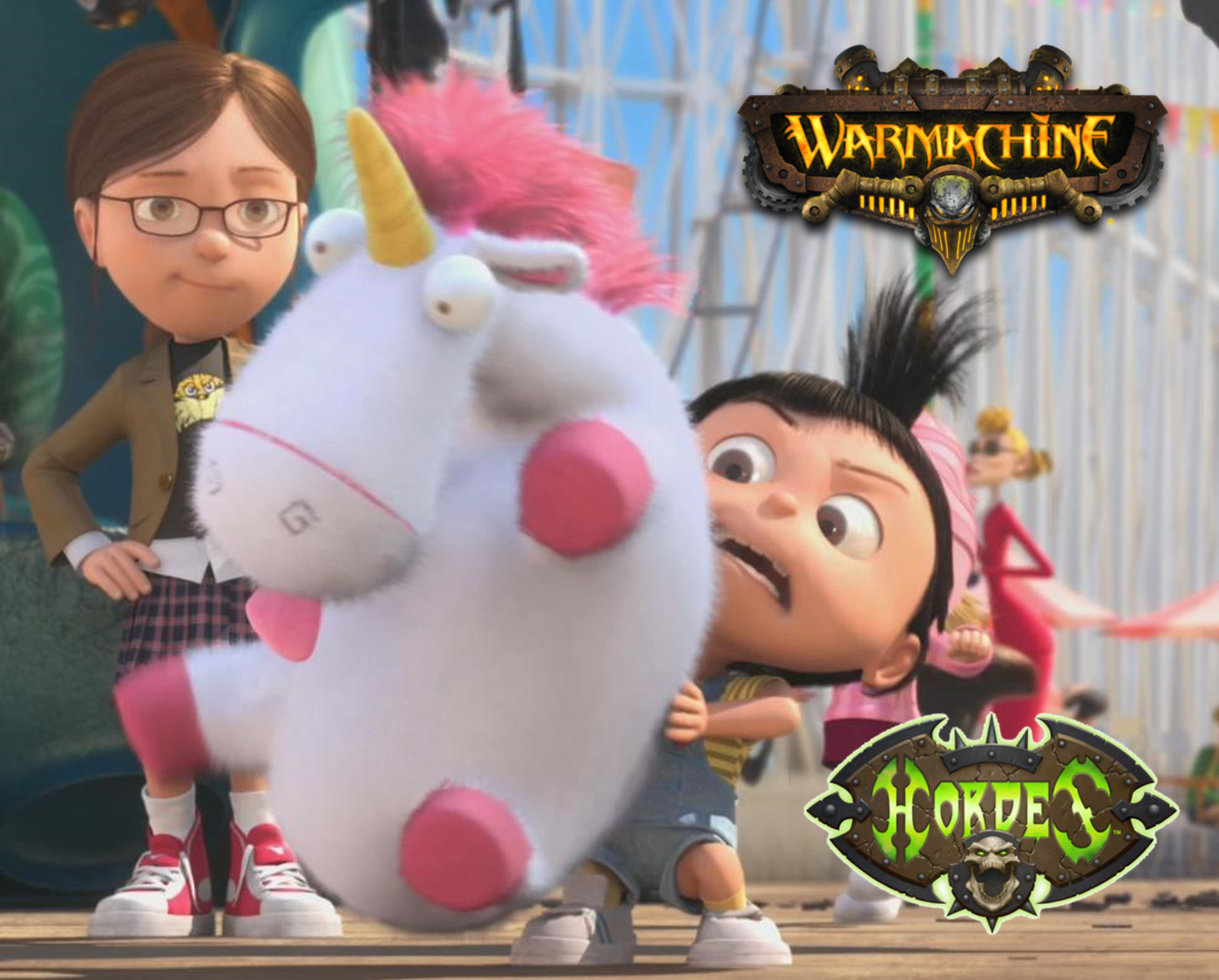

Ranking the best Fluff in Warmachine and Hordes.
Chalkboard here from Chalkboard War, continuing my series of articles on Warmachine and Hordes that examines the “Best of the Best” attributes across all models and factions. We’ll examine the top Feats, Spells, Abilities, Weapons, Stat Lines, Damage Grids, and anything else that appears on model entries in the game. All to give you a sense for which models are among the best on those categories.
This Week, Fluff. Yes fluff. All the cool stories and tales that make the Warmachine and Hordes world what it is. I’m going to rank the three best pieces of fluff in the game. And yes, this is absolutely a subjective one. But of course, if you think the other articles in this series haven’t been completely subjective as well, you may need to revise your outlook on impartiality.
So let’s get right to it! The following are my list of the top three coolest fluff moments in Warmachine and Hordes. At the end is a bonus “Dishonorable Mention” for the very worst narrative out there.
Number Three: “No Dignity for the Dead” (Warmachine: Wrath)
This short story is the tale of Lord Exhumator Scaverous, and his signature Warjack Erebus, assaulting an armored Khador train. His goal: a car packed full of Greylord corpses. Well, more like the information contained inside their skulls, which Scaverous is able to extract.
What makes the story excellent is that it balances the action of the assault on the train with Scaverous’ patient and nuanced extraction of information from the Greylord corpses. At first, Cryx strikes–and the action starts there. Toward the end, as Khador forces push back, Scaverous has to balance his pursuits with the safety of himself and the non-expendable portions of his forces. It’s a cool story with extremely effective pacing, and one of my favorites in the Iron Kingdoms lore.
Number Two: “Kin of the Blood” (Hordes Primal Mark II)
This one is likely the most familiar on this list. It’s the central story of the main Hordes rulebook for Mark II. It starts with a simple Trollbloods stone carver named Torkar of the Molras kriel. His partner gets taken by the Legion of Everblight. It then follows Grissel Bloodsong in her quest to find out what’s happening and return those lost. She defies Doomshaper in the course of doing what’s right, and clashes with Vayl in one of my favorite duels in the fluff.
What makes this story such a great piece of fluff is that it really gives the reader the feeling of the Warbeast system for Hordes. The way that they sense and command their beasts is just really neatly done in this piece. In particular, I love the way that the Warlocks get influenced back by the beasts under their control. It’s fun to think of that power as a two-way street.
It served (and serves) such a great purpose in that way as fluff. The point is to “get” the system and the powers of the characters, even before you see their stats. Reading this one, more than any other Warmachine and Hordes story (in my opinion), “teaches’ the rules without ever needing to be clunky about them. There are other pieces that get bogged down a bit because they have to fit what’s on the cards. But this one? This one gets it absolutely right in balance. It’s a great story, and it makes Hordes immediately understandable.
Number One: “Iterations of Transfiguration” (Forces of Warmachine: Convergence)
So of the fluff I’ve mentioned, this one is likely not as well-read as some of the others. The others came in the progression books, but this one appears in a “Forces of” book. Adding to that it was a limited release faction: Convergence of Cyriss. Yet the story of how Lucant became Father Lucant is the very best writing that I’ve seen from Privateer Press. Not to mention a fun origin story for Mortenebra.
The story begins with Lucant reflecting back upon what set up his placement into his machine body. The bulk of the story details him as an Enumerator, serving in the faith of Cyriss and as a participant into research into the process of storing the soul in a container upon death. It takes a dangerous occurrence to lead him to rejection of the Cryxian method of soul entrapment. Yet he also learns the key elements of the process from his then-estranged partner Lucidia (Mortenebra).
At its heart, this story works so well because it asks some big questions of the reader. What is most important? Progress or honesty? What lengths would you go to in order to get what you’ve been seeking for so long? What if the consequences prove too much at the final step? It’s a great tale. Not only as an exploration of a classic character from the Iron Kingdoms lore (Lucant), but as a story of discovery, alliance, and truth.
Dishonorable Mention: “Forging a Dynasty” (Hordes: Exigence)
Alright. I admit it. I just cannot get into the fluff of the Farrow. This story introduces Helga to the Thornfall Alliance, but is centered around Lord Carver’s thoughts and observations. Like other pieces that focus on the Farrow, this one makes that central mistake (to my thinking) or making them too “human”. There’s a lot of grist for exploration, but this story just fumbles the savagery of someone like Carver.
The Farrow, fluff-wise, are a great platform to ask interesting questions of the reader. Yet somehow a lot of their fiction seems to fall sort. This story was the one that most bothered me. Carver’s self reflection on his title–ending by proclaiming “Bringer of Most Massive Destruction” to Helga–feels forced. Handled in smoother and darker fashion, there could be some epic Island of Dr. Moreau feeling to the sub-faction. But without that, as in the case with too many Farrow stories (including this one), it’s just a bland(er) telling of the grand armies arrayed against each other. The Farrow deserve better. At times it does rise above, but this one was a disappointment.
~ Does this ranking fit your thoughts? Did we miss a critical attribute? Was a great model overlooked, or a powerful interaction missed? Is Number One really that good? Do you think the “Dishonorable Mention” is not so dishonorable after all? Let us know in the comments below!
To watch the worst of the worst hit the tabletop, check out Chalkboard’s Warmachine and Hordes blog at:

